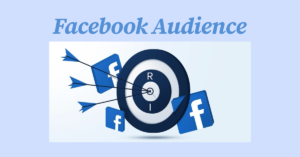In today’s competitive business environment, every marketing dollar counts. Marketers need to demonstrate the impact of their efforts, and one of the most reliable ways to measure success is through Marketing ROI (Return on Investment). It helps businesses understand how effectively their marketing campaigns are driving profits relative to the costs involved.
In this blog, we’ll explore what Marketing ROI is, why it matters, how to calculate it, and tips for maximizing it.
What is Marketing ROI?
Marketing ROI measures the revenue generated from a marketing campaign compared to the cost of executing it. It’s a critical metric that shows whether your marketing efforts are profitable and provides insights into what’s working and what needs improvement.
A positive ROI means that your marketing is generating more revenue than it costs, while a negative ROI indicates the opposite.
Why is Marketing ROI Important
1. Performance Measurement
Marketing ROI helps businesses evaluate the effectiveness of their campaigns and allocate budgets to the most successful strategies.
2. Better Budget Allocation
By identifying which campaigns deliver the highest returns, businesses can focus their resources on areas that yield the best results.
3. Accountability
ROI ensures marketers are accountable for their expenditures, making it easier to justify budgets to stakeholders.
4. Informed Decision-Making
ROI insights help refine marketing strategies, improve targeting, and optimize campaigns for better outcomes.
How to Calculate Marketing ROI
The basic formula for Marketing ROI is:
{ROI} = {Revenue from Campaign}/ {Cost of Campaign} x 100
Example:
– Revenue from a campaign: ₹1,00,000
– Cost of the campaign: ₹40,000
{ROI} ={1,00,000 – 40,000}{40,000} times 100 = 150%
This means the campaign generated 150% of the amount spent, or ₹1.50 for every ₹1 invested.
Factors to Consider When Calculating ROI
1. Revenue Attribution
Ensure you attribute revenue accurately to the marketing campaign being measured. Tools like Google Analytics can help track conversions.
2. Timeframe
Some campaigns have delayed effects. For example, SEO efforts may take months to yield measurable results.
3. Indirect Benefits
While ROI typically focuses on direct revenue, consider intangible benefits like brand awareness and customer loyalty.
Challenges in Measuring Marketing ROI
1. Attribution Complexity
Determining which campaign or channel contributed to revenue can be challenging, especially in multi-channel marketing.
2. Time Lag
Some marketing efforts, like content marketing or SEO, take longer to show results, complicating ROI calculations.
3. Intangible Outcomes
Brand equity and customer engagement, while valuable, are hard to quantify in monetary terms.
Tips to Maximize Marketing ROI
1. Set Clear Goals
Define specific, measurable objectives for each campaign. For example, aim to increase website traffic by 20% or generate 500 new leads.
2. Target the Right Audience
Use data and analytics to identify your ideal audience. Tailor your messaging to meet their needs and preferences.
3. Leverage Analytics Tools
Tools like Google Analytics, HubSpot, and Facebook Ads Manager can help track performance and provide actionable insights.
4. Test and Optimize
Continuously A/B test your campaigns, from ad creatives to landing pages, to identify what works best and refine your strategy.
5. Focus on High-Performing Channels
Analyze past campaigns to identify the most profitable channels and allocate more resources to them.
6. Use Automation
Marketing automation tools can save time and reduce costs while improving personalization, leading to better ROI.
7. Invest in Retargeting
Retargeting campaigns can help convert users who didn’t make a purchase during their first interaction with your brand.
Examples of Marketing ROI
1. Email Marketing
A business spends ₹10,000 on an email marketing campaign and generates ₹50,000 in revenue.
ROI: (frac{50,000 – 10,000}{10,000} times 100 = 400%)
2. Social Media Ads
A company spends ₹30,000 on Facebook ads, leading to ₹90,000 in sales.
ROI: (frac{90,000 – 30,000}{30,000} times 100 = 200%)
Key Metrics to Track Alongside ROI
– Customer Acquisition Cost (CAC): How much it costs to acquire a new customer.
– Customer Lifetime Value (CLV): The total revenue a business expects from a customer over their lifetime.
– Conversion Rate: The percentage of users who take the desired action.
– Engagement Rate: A measure of audience interaction with your content
Conclusion
Marketing ROI is a vital metric that helps businesses assess the profitability and effectiveness of their campaigns. By understanding and improving ROI, you can ensure that your marketing efforts drive meaningful results, optimize resource allocation, and contribute to overall business growth.
Remember, ROI isn’t just a number; it’s a guide to smarter marketing decisions. With the right strategies, tools, and mindset, you can maximize your ROI and achieve your marketing goals.




